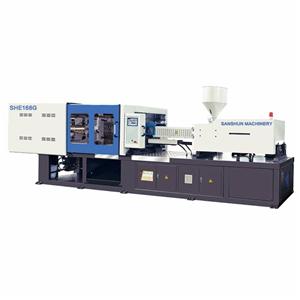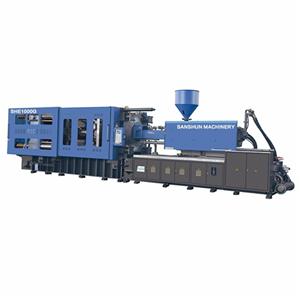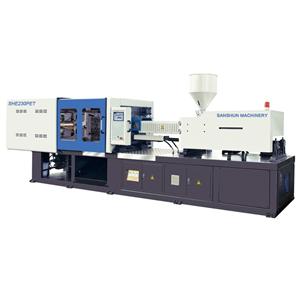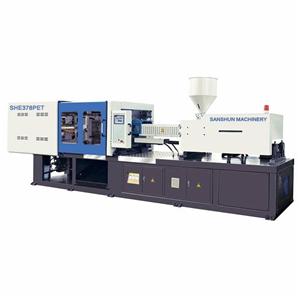- Home
- >
- News & Resources
- >
- Our Blog
- >
- Condition control instructions in the injection molding process
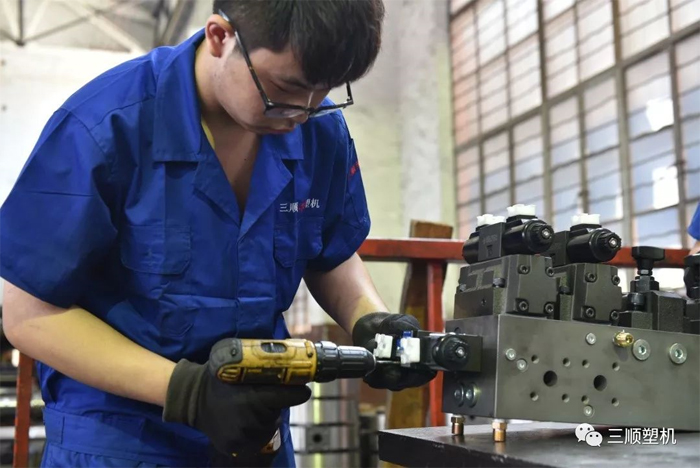
Program control of injection speed
The program control of the injection speed is to divide the injection stroke of the screw into 3 to 4 stages, and each of the stages uses an appropriate injection speed. For example, when the molten plastic just starts to pass through the gate, the injection speed is slowed down, and during the filling process, high-speed injection is used, and the speed is slowed down at the end of filling. With such a method, it is possible to prevent flashing, eliminate flow marks, and reduce residual stress of the product.
The flow rate is stable at low speed filling, the product size is relatively stable, the fluctuation is small, the internal stress of the product is low, and the internal and external stresses of the product tend to be uniform (for example, a polycarbonate product is immersed in carbon tetrachloride, and is injection molded by high speed. The part has a tendency to crack, and the low speed does not crack.) Under relatively slow filling conditions, the temperature difference of the stream, especially the temperature difference between the material before and after the gate, helps to avoid the occurrence of shrinkage cavities and depressions. However, due to the long filling time, it is easy to cause delamination and poorly welded welds, which not only affects the appearance, but also greatly reduces the mechanical strength.
When the high-speed injection is carried out, the flow speed is fast. When the high-speed filling is successful, the melt quickly fills the cavity, the material temperature drops less, the viscosity decreases less, and the injection pressure can be used, which is a hot charge. Modal potential. High-speed filling can improve the gloss and smoothness of the parts, eliminate the seam line phenomenon and delamination, shrink the small depression, uniform color, and ensure the fullness of the larger part. However, it is easy to produce fat or foaming of the product or yellowing of the workpiece, or even burn the zoom, or cause difficulty in demoulding, or uneven filling. For high-viscosity plastics, it is possible to cause the melt to rupture, causing cloud spots on the surface of the part.
High-speed high-pressure injection can be considered in the following cases:
(1) The plastic has high viscosity and fast cooling speed, and the long process parts can not completely fill the corners of the cavity with low pressure and slow speed;
(2) For parts with too thin wall thickness, the molten material will be condensed and retained when it reaches the thin wall, and a high-speed injection must be used to allow the melt energy to enter the cavity immediately before mass consumption;
(3) Plastics reinforced with glass fiber, or plastics containing a large amount of filler material, due to poor fluidity, in order to obtain a smooth and uniform surface, high-speed high-pressure injection must be used.
For advanced precision products, thick-walled parts, parts with large wall thickness variations and thick flanges and ribs, it is best to use multi-stage injections, such as secondary, tertiary, fourth or even five.
Program control of injection pressure
The control of the injection pressure is usually divided into one injection pressure, a secondary injection pressure (holding pressure), or a control of injection pressure of three or more times. Whether the pressure switching timing is appropriate is very important to prevent excessive pressure in the mold, prevent flashing or lack of material. The specific volume of the molded article depends on the melt pressure and temperature at which the gate is closed during the holding phase. If the pressure and temperature of the product are switched from the pressure holding to the product cooling stage, the specific volume of the product will not change.
At a constant molding temperature, the most important parameter determining the size of the article is the holding pressure. The most important variables that affect the dimensional tolerance of the article are the holding pressure and temperature. For example, after the filling is completed, the holding pressure is immediately reduced. When the surface layer is formed to a certain thickness, the holding pressure is increased again, so that the thick-walled large product can be formed by the low clamping force to eliminate the collapse pit and the flash.
The holding pressure and speed are usually 50%~65% of the maximum pressure and speed when the plastic is filled into the cavity, that is, the holding pressure is about 0.6~0.8MPa lower than the injection pressure. Since the holding pressure is lower than the injection pressure, the load of the oil pump is low, the service life of the oil pump is prolonged, and the power consumption of the oil pump motor is also reduced during a considerable holding time.
The three-stage pressure injection not only enables the workpiece to be smoothly filled, but also does not have weld lines, dents, flash edges and warpage. For the molding of thin-walled parts, small heads, long-flow large parts, and even the molding of parts with less uniform cavity configuration and less tight clamping.
Program control of plastic filling amount injected into cavity
Pre-adjusting a certain amount of metering, so that a small amount of melt (buffering amount) remains at the end of the screw near the end of the injection stroke, and the injection pressure (secondary or three injection pressures) is further applied according to the filling condition in the mold. Add a little melt. In this way, it is possible to prevent the product from being depressed or to adjust the shrinkage rate of the article.
Program control of screw back pressure and speed
The high back pressure allows the melt to be strongly sheared, and the low rotational speed also allows the plastic to have a longer plasticizing time in the barrel. Therefore, the control of the simultaneous design of the back pressure and the rotational speed is currently used more.
For example, the screw measures the full stroke first high speed, low back pressure, then switches to lower speed, higher back pressure, then switches to high back pressure, low speed, and finally plasticizes at low back pressure and low speed. In this way, the pressure of the melt at the front of the screw is mostly released, reducing the moment of inertia of the screw, thereby improving the accuracy of screw metering. Excessive back pressure often causes the discoloration of the colorant to increase; the mechanical wear of the pre-plastic machine combined with the barrel increases; the pre-plasticization period is prolonged, the production efficiency is decreased; the nozzle is prone to runny, and the amount of recycled material is increased; even if self-locking is adopted Nozzles, if the back pressure is higher than the designed spring blocking pressure, can also cause fatigue damage. Therefore, the back pressure must be adjusted properly.


